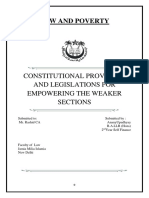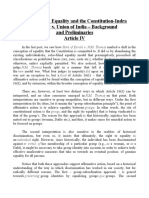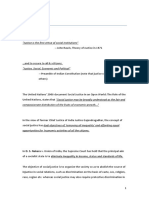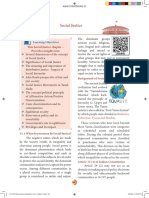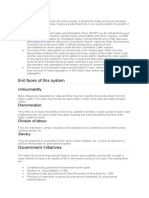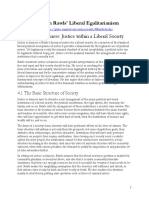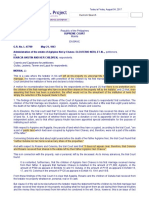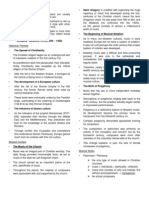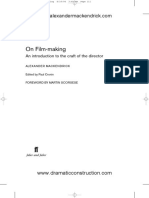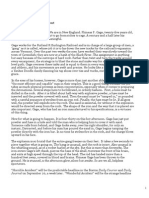0% found this document useful (0 votes)
62 views22 pagesChapter - I
The document discusses the philosophy and objectives behind reservation policies in India. It notes that reservations were envisioned as a temporary measure to promote equality and reduce historical inequalities faced by Scheduled Castes, Scheduled Tribes, and other Backward Classes in India across legislative bodies, education, and government services. However, over time the benefits of reservation policies have largely been monopolized by the "creamy layers" of these groups, failing to help the most disadvantaged. As a result, reservations may now be promoting social disequilibria rather than achieving their goal of social engineering and equality.
Uploaded by
Balapradeep ReddyCopyright
© © All Rights Reserved
We take content rights seriously. If you suspect this is your content, claim it here.
Available Formats
Download as PDF, TXT or read online on Scribd
0% found this document useful (0 votes)
62 views22 pagesChapter - I
The document discusses the philosophy and objectives behind reservation policies in India. It notes that reservations were envisioned as a temporary measure to promote equality and reduce historical inequalities faced by Scheduled Castes, Scheduled Tribes, and other Backward Classes in India across legislative bodies, education, and government services. However, over time the benefits of reservation policies have largely been monopolized by the "creamy layers" of these groups, failing to help the most disadvantaged. As a result, reservations may now be promoting social disequilibria rather than achieving their goal of social engineering and equality.
Uploaded by
Balapradeep ReddyCopyright
© © All Rights Reserved
We take content rights seriously. If you suspect this is your content, claim it here.
Available Formats
Download as PDF, TXT or read online on Scribd
/ 22














